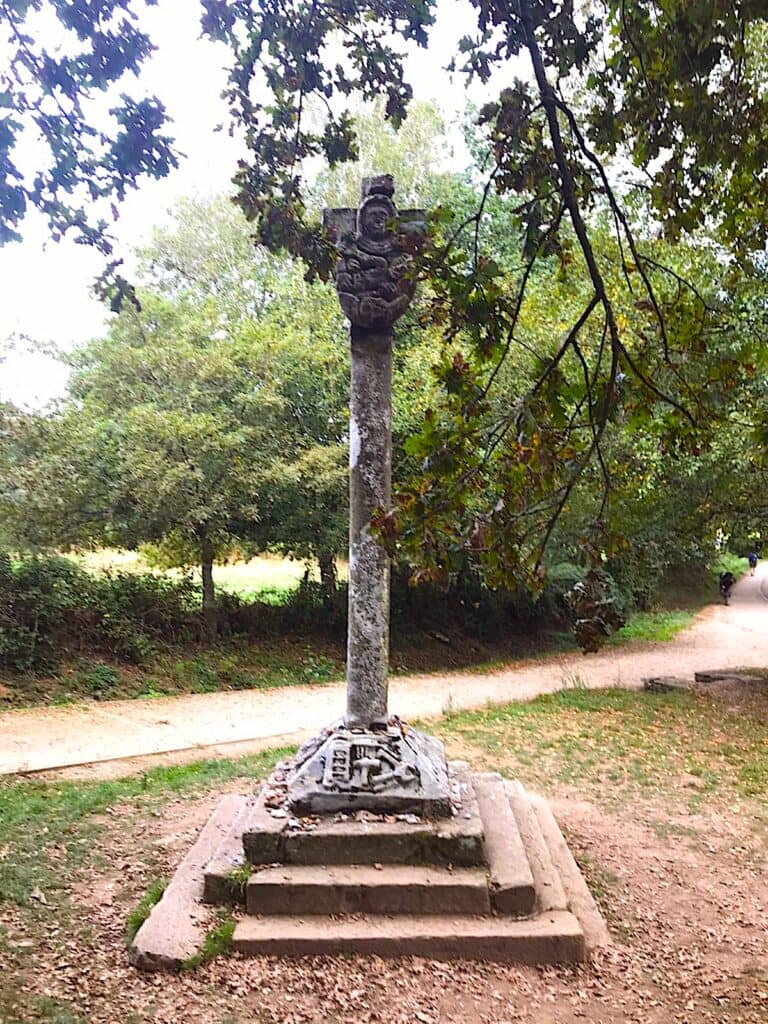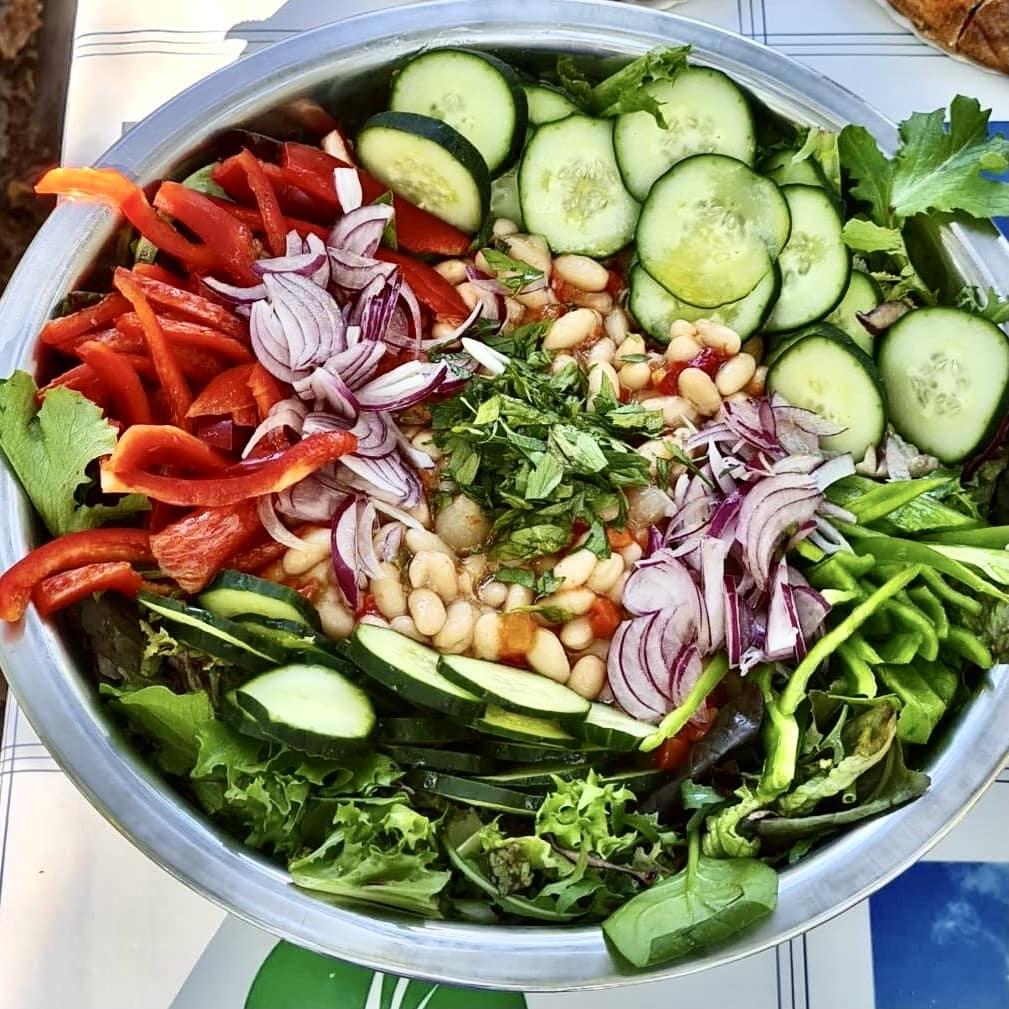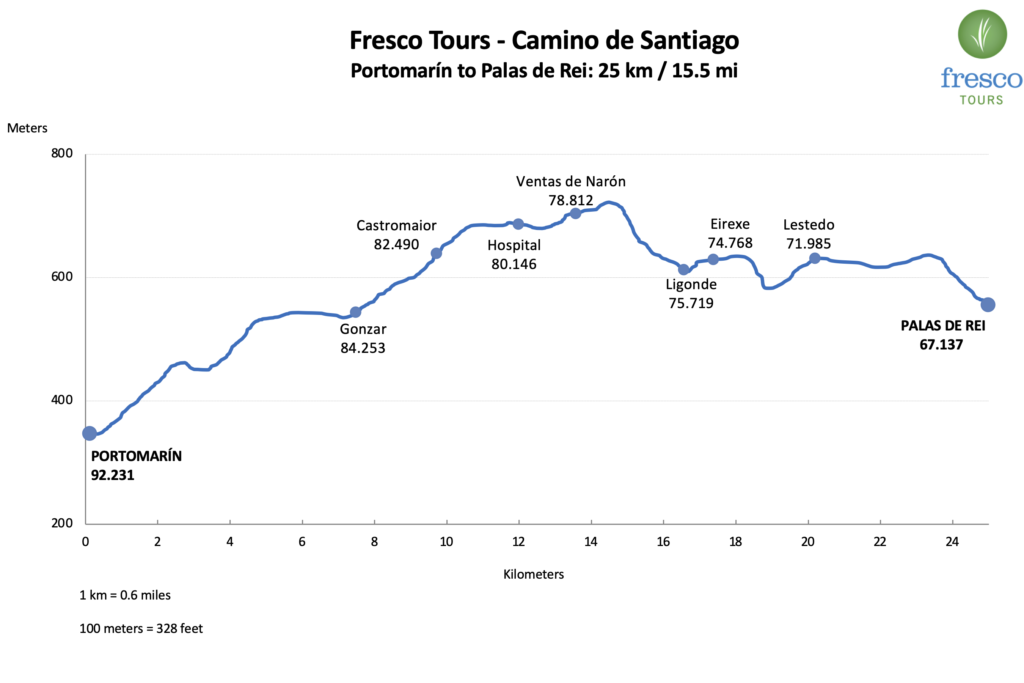Having enjoyed a good night’s sleep and an energizing breakfast, we get ready to travel west across the Galician countryside, from Portomarin to Palas de Rei. As we embark on our journey we notice that a new kind of foliage has joined the lush landscape. As our Fresco Tours guides will explain, Eucalyptus trees have been introduced and cultivated in the area and can be used for many purposes, including forestry and paper production. These strikingly grey-green trees, with their tall white trunks and aromatic leaves, create a distinctive atmosphere and provide shade along the path.
Perhaps one of today’s highlights is the castro (Celtic settlement) near the hamlet of Castromaior. These remains are over 2000 years old and what you see are the foundations and walls of the section that have been unearthed. Make sure you follow your Fresco Tours guide’s instructions to find the site; or even better, stay close by to get the full story when you arrive!

As we continue to follow the trail, we come across Ligonde, a small village that stands out from the rest because of the ancient granite cruceiro (stone cross) and the hundred-year-old oak tree that greet you before you enter town. The cruceiro dates from 1670, and presents a crucifixion on one side, a pietá (Virgin Mother suffering) on the other side, and an image of the instruments used during the passion of Christ on the base. The large oak tree has provided shade for countless pilgrims before us, and is the perfect spot for a fabulous Fresco Tours picnic lunch.

After a rewarding walk, we finally arrive in Palas de Rei. The name of the town translates to “Palace of the King” and it is believed to have been named after the royal palace of the Visigoth King Witiza that once stood in the area in the Middle Ages. King Witiza lived sometime around the end of the seventh century, while his death is said to have coincided with the beginning of the Moorish invasion in 711. According to legend and tradition, Witzia was the archetype of the evil ruler. His personal life, filled with mistresses and murder, is said to have mirrored his regency of cruelty and tyranny. However, his kingdom no longer stands, and in its place is our destination for today. We can relax and enjoy dinner before heading to bed to rest our feet for tomorrow!







